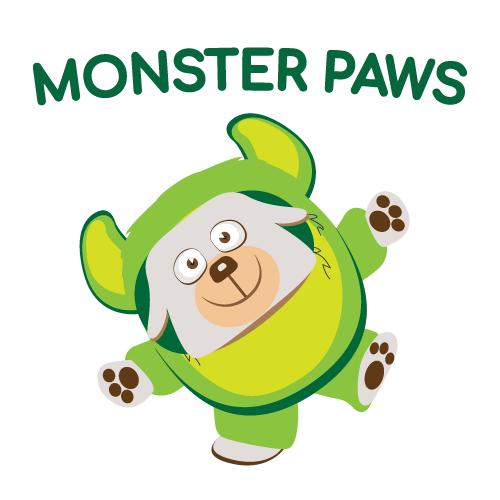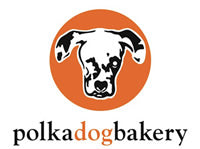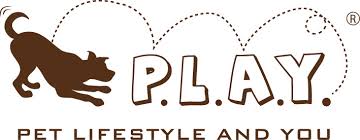When Fear Takes Over: 5 Ways to Help Your Dog Stay Calm
Stephanie Wan Editorial Date:Everyone has something that they’re afraid of, and our dogs are no different. When that fight or flight response is triggered, you may find your pup hiding under the bed during a thunderstorm, cowering away from a simple hair brush, or even exhibit aggressive behaviours such as barking, lunging, and biting.
Even though sometimes we think our dogs are just being silly or dramatic because there is no logical reason why they should be scared, the fear they feel is real, and causes real physical symptoms such as increased blood pressure and heart rate. Helping your dog stay calm will decrease their stress level, and help them overcome their fears.
Contents
Fact: You Cannot Reinforce Fear
Some people are worried that if they comfort their dog when they are afraid, it will make their dog more scared, and reinforce, or strengthen, their fear. However, this is not true! Fear is an emotion, not a voluntary behaviour, and your dog cannot choose to feel scared again because you comforted them with a cuddle or a treat. Think about something that makes you afraid. If your friend gave you words of encouragement or a hug, would that make you more afraid? Or make you feel better? Comforting your dog will help them feel safer and calmer, and will not reinforce their fear.

Here are 5 ways to help your dog stay calm when faced with something they are scared of, and help them cope with and overcome their fears.
1. Have a Management Plan
Before your dog has overcome their fear, develop a management plan so that they do not need to be placed in that fearful situation. Humans have a “face your fears” mentality, but this often leads to dogs being placed in situations that they are not able to cope with. A fearful dog may react unpredictably, leading to dangers such as slipping out of their harness and getting lost, or injuring themselves while they struggle to escape. Your dog can also become so overwhelmed that they shut down. This can be mistaken for calmness, but in reality it is called flooding, and your dog is so scared they do not know how to react.
To help your dog, keep them away from their triggers. If your dog is afraid of the vacuum cleaner, it is as simple as putting them in another room while you vacuum. Then you can introduce the vacuum cleaner in a controlled manner, and change your dog’s emotional response towards it without causing fear.

2. Use a Calming Aid
If you cannot remove your dog from a situation he’s scared of, such as a thunderstorm or fireworks, use a calming aid to help them cope until it is over. A thundershirt is worn by your dog, which applies gentle pressure over their body similar to swaddling a baby. This relieves their anxiety in a natural, drug free way by providing a feeling of comfort and warmth.
A white noise machine that produces gentle repetitive sounds can help calm your dog as well. White noise, like TV static, rain, or ocean waves, create a consistent sonic environment that relaxes the nervous system, relieving tension and anxiety. The Relaxopet Ultrasonic Dog Relaxing System emits both audible and inaudible sound waves, allowing you to find the perfect frequency to help your dog relax.

3. Calming Supplements
Calming supplements come in the form of chews or liquid drops that you can give your dog directly or add to their food. Pet Naturals of Vermont Calming Chews contains L-theanine, Vitamin B1, and Colostrum Calming Complex, which have been shown to relax the nervous system and manage stress without causing drowsiness. Animal Essentials Herbal Tranquility Blend is made with organic herbs designed to calm anxiety. Homeopet has stress relief products for travel anxiety, storm stress, and general anxiety, made with natural ingredients and no harsh chemicals. These supplements are not sedatives and should not cause changes in your dog’s alertness or personality. If you have any concerns, speak to your vet before using calming supplements.

4. Training in a Controlled Environment
Being proactive in training will help your dog overcome their fears. Introducing the frightening trigger in a controlled manner ensures that your dog stays below itsunder threshold and does not become stressed, allowing them to build confidence and positive associations with their trigger. A dog that is over its threshold does not learn well, which is why being proactive and training in advance is so important.
If your dog is afraid of thunderstorms, the best time to train them is in the absence of thunderstorms. Instead of the real deal which sends your dog into a panic., Iintroduce sounds of the thunderstorm at a low volume by playing a video on your phone or computer. Reward your dog for noticing the sound and for staying relaxed. By controlling the volume, the distance of the sounds from your dog, and even the exact sounds you want to introduce, you begin a desensitization and counter-conditioning exercise that helps your dog become accustomed to their trigger, and change their negative feelings into positive feelings. As your dog becomes more comfortable, you can increase the volume, making sure your dog remains relaxed and under its threshold.

5. Comfort Your Dog!
As mentioned above, it is very natural to comfort your dog if they need it. You can work on training later, but if your dog is already scared, removing them from the situation if possible and comforting them will help them feel safe, loved, and build trust with you.
As pet parents, we know how painful it is so see our dogs afraid. Understanding dogs’ body language will help us recognize their stress signals, and be able to step in to help our best friends deal with difficult situations!




























